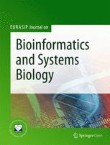Learning directed acyclic graphs from large-scale genomics data
In this paper, we consider the problem of learning the genetic interaction map, i.e., the topology of a directed acyclic graph (DAG) of genetic interactions from noisy double-knockout (DK) data. Based on a set...
